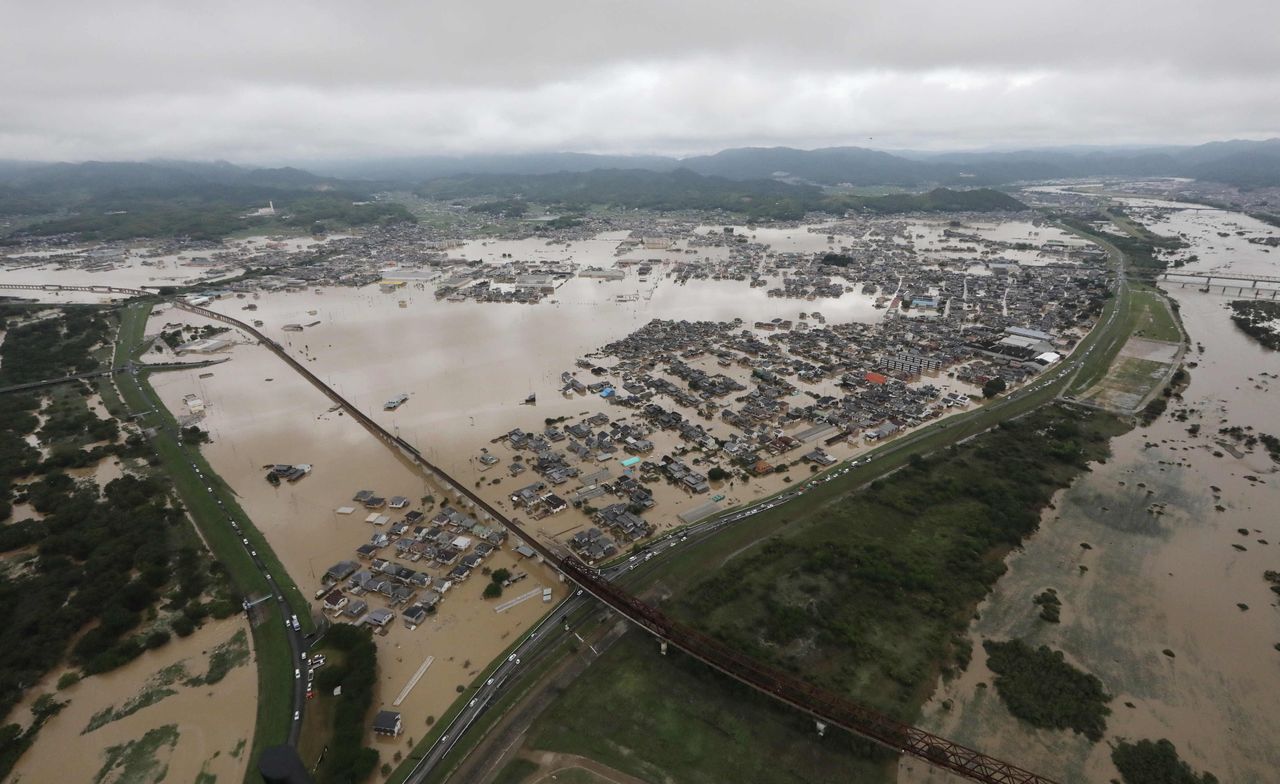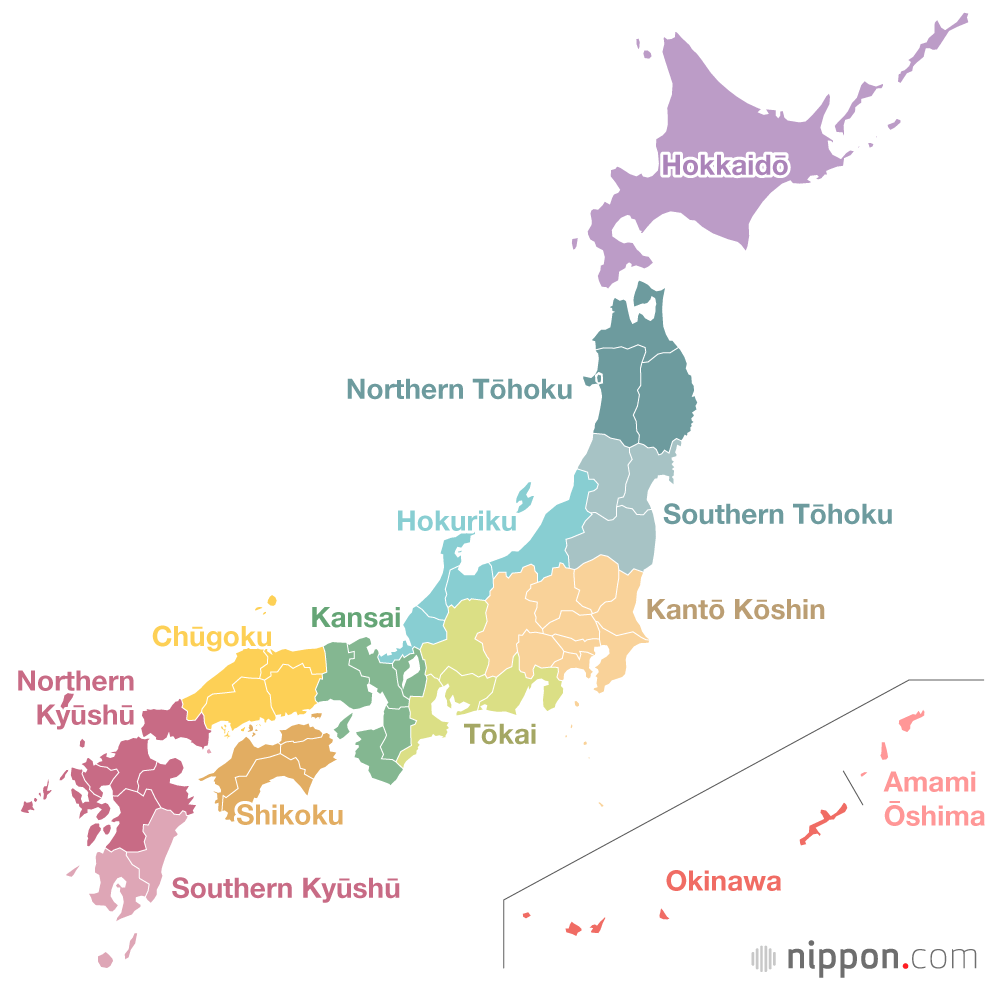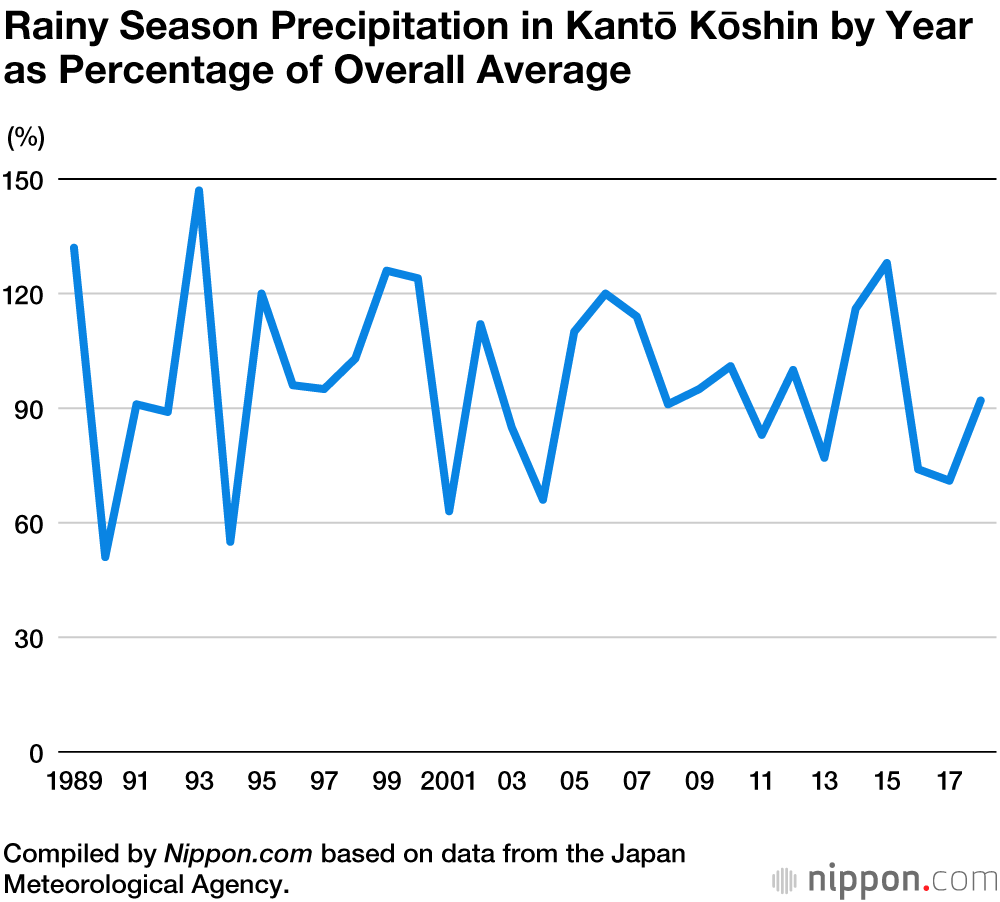
Japan Braces for Rainy Season After Last Year’s Disastrous Downpours
Society- English
- 日本語
- 简体字
- 繁體字
- Français
- Español
- العربية
- Русский
Rainfall Varies Year to Year
The following chart shows the start and end of rainy season in each region in 2018, as well as the average annual dates. Hokkaidō is not greatly affected by rainy season, and so is not included.
2018 Rainy Season Dates and Average Annual Dates
| Start of Rainy Season 2018 | End of Rainy Season 2018 | Average Starting Date | Average Ending Date | |
|---|---|---|---|---|
| Okinawa | June 1 | June 23 | May 9 | June 23 |
| Amami Ōshima | May 27 | June 26 | May 11 | June 29 |
| Southern Kyūshū | June 5 | July 9 | May 31 | July 14 |
| Northern Kyūshū | June 5 | July 9 | June 5 | July 19 |
| Shikoku | June 5 | July 9 | June 5 | July 18 |
| Chūgoku | June 5 | July 9 | June 7 | July 21 |
| Kansai | June 5 | July 9 | June 7 | July 21 |
| Tōkai | June 5 | July 9 | June 8 | July 21 |
| Kantō Kōshin | June 6 | June 29 | June 8 | July 21 |
| Hokuriku | June 9 | July 9 | June 12 | July 24 |
| Southern Tōhoku | June 10 | July 14 | June 12 | July 25 |
| Northern Tōhoku | June 11 | July 19 | June 14 | July 28 |
On average, rainy season starts from early June from Southern Kyūshū through Fukuoka, Osaka, and Nagoya to the greater Tokyo area, and ends one and a half months later in late July. Rainy season precipitation in Kyūshū is around 500 millimeters, making up one quarter of the region’s annual rainfall, while the Kantō Kōshin and Tōkai areas receive 300 millimeters of rain, accounting for one fifth of those regions’ annual rainfalls, respectively.
The below chart shows precipitation during rainy season over the last 30 years in Kantō Kōshin. The figures vary greatly depending on the year, including cases such as in 1990 when there was a dry rainy season in which only half the average annual rainfall was recorded.
Huge Damage in Western Japan in 2018
Toward the end of each rainy season, the volume of rain gets heavier and frequent severe downpours can cause damage due to rivers flooding and landslides. Between June 28 and July 8, 2018, there was record widespread rainfall, particularly across western Japan, with some areas receiving more than 1,800 millimeters of precipitation.
The death toll in the 2018 Japan floods came to more than 220 and according to Cabinet Office data, approximately 17,000 houses were either totally or partially destroyed, while 30,000 houses were flooded.

Aerial view of Kurashiki City, Okayama Prefecture, taken the morning of July 8, 2018. (© Jiji)
(Translated from Japanese. Banner photo © Ushico/Pixta.)

